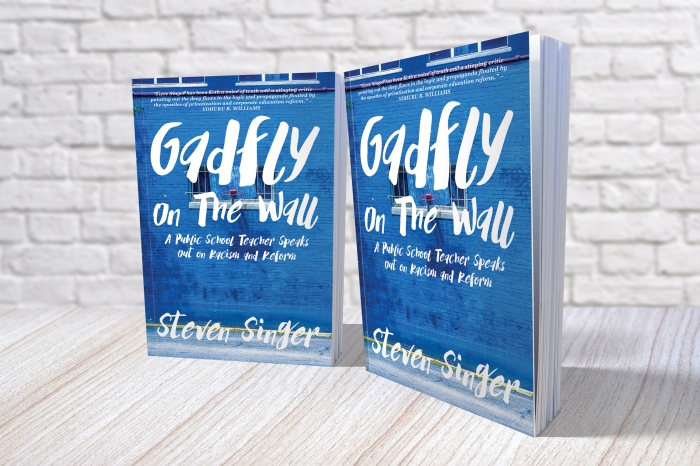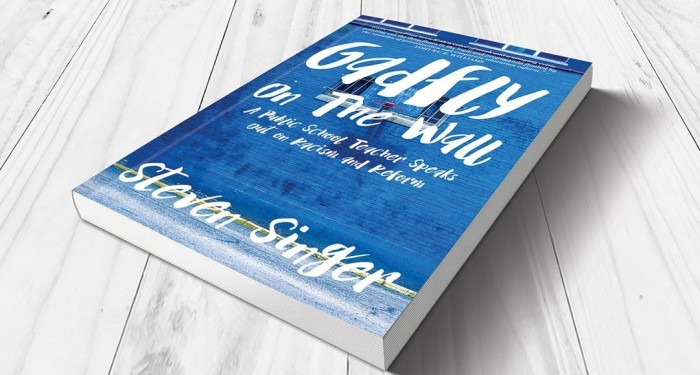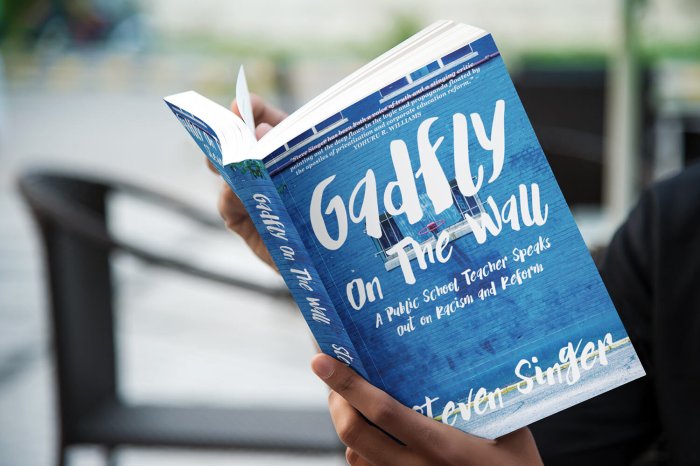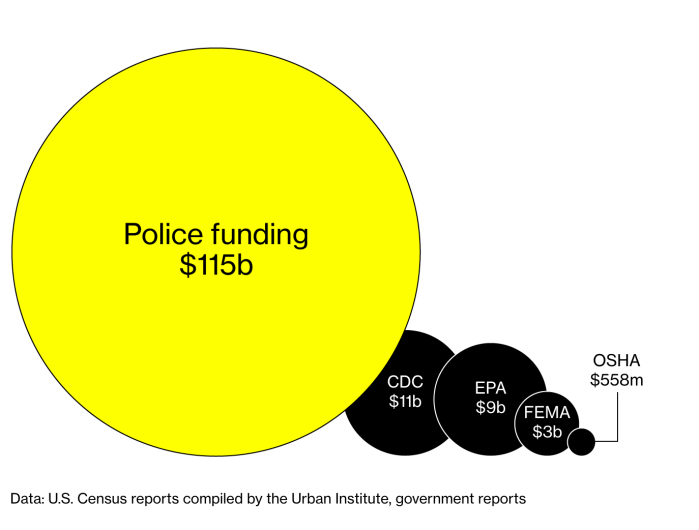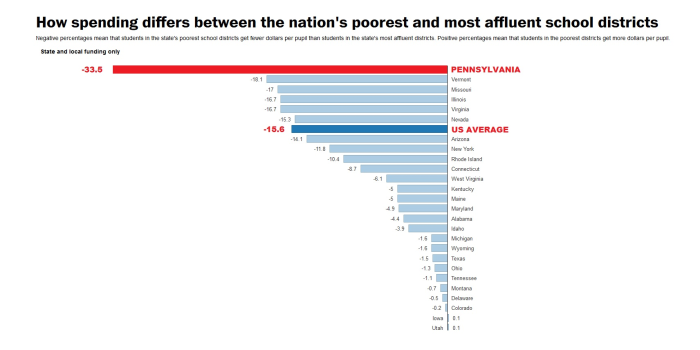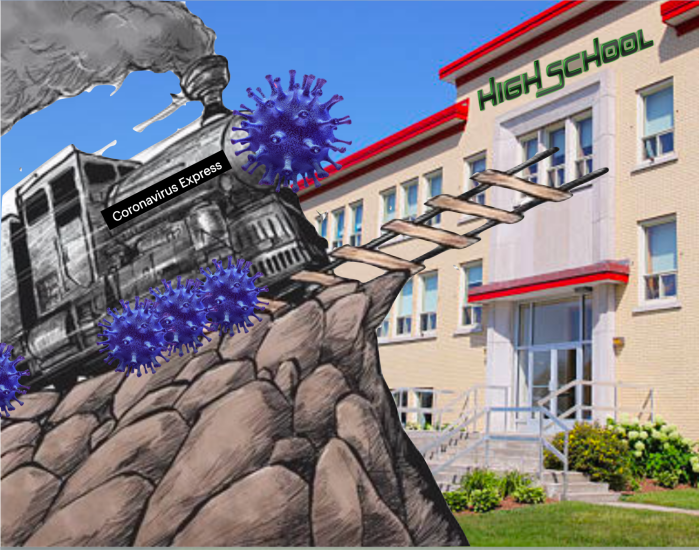
Congratulations, America.
We did it.
We screwed up the response to COVID-19 so badly that things can only get worse in the fall.
I’m a public school teacher and the father of a public school student.
I spent the last 9 weeks of class trying to create a new on-line curriculum for my 7th and 8th grade students out of thin air. Meanwhile, I had to assure my 11-year-old daughter that everything was okay during a global pandemic that robbed her of friends and teachers – all while trying to help her with her own school work.
And now at the end of June during Summer break I look at the upward curve of Coronavirus infections in the United States, and I want to cry.

We had this thing on a downward trajectory in May. It continued until about the middle of June and then took off like a rocket to the moon – straight up.
More than 126,000 deaths, and 2.5 million cases – with 40,000 new cases for each of the last four days, according to the Center for Disease Control (CDC).
To put that in context, the CDC also says our testing is so inadequate, there are likely 10 times more actual cases than that!
The coronavirus is spreading too quickly and too widely for us to bring it under control, said Dr. Anne Schuchat, principal CDC deputy director.
“We’re not in the situation of New Zealand or Singapore or Korea where a new case is rapidly identified and all the contacts are traced and people are isolated who are sick and people who are exposed are quarantined and they can keep things under control,” she said. “We have way too much virus across the country for that right now, so it’s very discouraging.”

Nearly every other comparable country kept that downward trend. But not us.
The United Kingdom, France, Italy, Germany, Canada…
But the United States!?
Ha!
You think we can wear masks in public to guard against the spread of infection? No way! Our President politicized them.
Stay indoors to keep away from infected people? It’s summer and the beaches are open.
And – heck! – we’ve got to make sure restaurants and bars and other businesses are open, too, or else the economy will suffer – and we can’t figure out how to run the country without a never-ending game of Monopoly going.
Gotta find out who owns Boardwalk and Park Place. (Surprise! It’s the same 1% who always have and now they’ve got enough to buy a few more hotels!)
A sane country would come together and provide people with federal relief checks, personal protective equipment (PPE), protection from evictions, and universal healthcare. But we don’t live in that country.
Instead we’re all just going to have to suffer.
Not only you and me, but our kids, too.
Because they will have to somehow try to continue their educations through all this madness – again. And this time it won’t merely be for the last quarter of the year. It will be at the start of a new grade when everything is new and fresh and the groundwork is being laid for the entire academic year.
I don’t even know what to hope for anymore.
Would it be better to try to do a whole year of distance learning?
I speak from experience here – April and May were a cluster.
Kids didn’t have the necessary technology, infrastructure or understanding of how to navigate it. And there was no way to give it to them when those were the prerequisites to instruction.
Not to mention resources. All the books and papers and lessons were back in the classroom – difficult to digitize. Teachers had to figure out how to do everything from scratch with little to no training at the drop of a hat. (And guess what – not much has changed in the subsequent weeks.)
Let’s talk motivation. Kids can be hard to motivate under the best of circumstances, but try doing it through a screen! Try building a trusting instructional relationship with a child when you’re just a noisy bunch of pixels. Try meeting individual special needs.
A lot of things inevitably end up falling through the cracks and it’s up to parents to pick up the pieces. But how can they do that when they’re trying to work from home or working outside of the home or paralyzed with anxiety and fear?
And this is probably the BEST option, because what else do we have?
Are we really going to open the school buildings and teach in-person? While that would be much better from an academic standpoint, there’s still the problem of a global pandemic.
Kids will get sick. As time goes on we see increasingly younger people getting infected with worsening symptoms. We really don’t know what the long term effects of this disease will be.
And even if young people are mostly asymptomatic, chances are good they’ll spread this thing to the rest of us.
They’ll bring it home to their families. They’ll give it to their teachers.
Even if we only have half the kids one day and the other half on another day, that won’t help much. We’re still being exposed to at least a hundred kids every week. (Not to mention the question of how to effectively teach some kids in-person while the rest are on-line!)
Even with masks on – and can you imagine teaching in a mask!? Can you imagine kids wearing masks all day!? – those respiratory droplets will spread through our buildings like mad!
Many of us are in the most susceptible groups because of age or health.
Don’t get me wrong – I want to get back to my classroom and teach my students in-person more than almost anything – except dying.
I’d rather live a little bit longer, thank you.
And even if you could guarantee I’d eventually pull through,I really don’t want a ventilator shoved down my throat in order to breathe.
It’s better than not breathing at all, but I’m not taking unnecessary risks, thank you.
So even with all its dysfunctions and discontents, I guess I’d rather teach on-line.
On the plus side, the state where I live, Pennsylvania, has done better with infections than many others.
Cases are generally down though we had more than 600 new ones a few days ago.
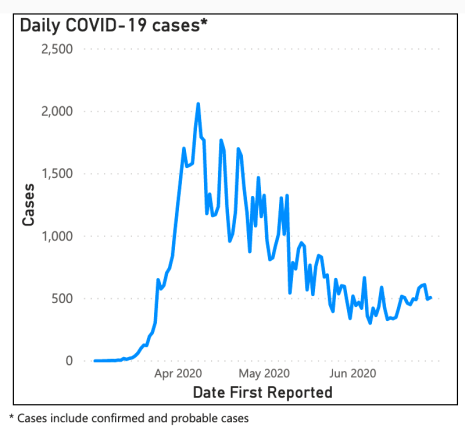
But the Commonwealth is not a closed system. It just takes one fool to travel across state lines from a closed arena of thousands where he heard an insecure public figure spout racist diatribes. One fool like that can spread his infection to thousands more.
And he can spread Coronavirus, too!
So we seem to be facing a no win situation here.
We seem to be hurtling forward in time from July to August while a hard reality is waiting to smack us in the face like a brick wall.
We’ll have to make a final decision about what to do with schools soon.
And as much as I hate the idea, there seems only one sensible solution.
We can’t reopen the classroom until it is safe to do so.
It is not yet safe. It does not appear that it will be in August.
COVID-19 cases are not trending downward. We do not have adequate testing to ensure that it is doing so. And we have no vaccine.
We have to protect our children, families and teachers.
A crappy year of education is better than mass death.
We will pay for it, but that’s the best we can hope for – that we’ll all survive long enough to make it right somewhere down the line.
Like this post? You might want to consider becoming a Patreon subscriber. This helps me continue to keep the blog going and get on with this difficult and challenging work.
Plus you get subscriber only extras!
Just CLICK HERE.

I’ve also written a book, “Gadfly on the Wall: A Public School Teacher Speaks Out on Racism and Reform,” now available from Garn Press. Ten percent of the proceeds go to the Badass Teachers Association. Check it out!
